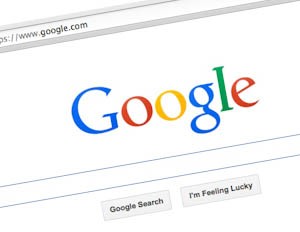 Google is a multinational corporation headquartered in Mountain View, CA, which is focused on the development of a wide range of Internet-based services which are accessed by a range of computing devices. 2014 was a rough year for Google financially as the company’s five percent fall in stock prices marked its worst fiscal performance since 2008. Worldwide, issues with taxes and censorship have caused Google to close or diminish its operations in Spain, China and elsewhere. Elsewhere, however, Google is focusing on greatly increasing its presence. For example, in India, Google is set to play a major role in that country’s “Digital India” initiative to create a connected economy and attract investment in electronics manufacturing.
Google is a multinational corporation headquartered in Mountain View, CA, which is focused on the development of a wide range of Internet-based services which are accessed by a range of computing devices. 2014 was a rough year for Google financially as the company’s five percent fall in stock prices marked its worst fiscal performance since 2008. Worldwide, issues with taxes and censorship have caused Google to close or diminish its operations in Spain, China and elsewhere. Elsewhere, however, Google is focusing on greatly increasing its presence. For example, in India, Google is set to play a major role in that country’s “Digital India” initiative to create a connected economy and attract investment in electronics manufacturing.
Today’s Companies We Follow profile of Google starts with a look at some intriguingly diverse technologies protected by patents recently issued by the U.S. Patent and Trademark Office. One patent protects a navigational system for directing medical drones to a situation in response to a call for emergency medical services. Another patent protects an innovative mobile electronic device that can provide tactile feedback to a user in response to search queries. We also focus on a couple of patents that protect software tools supporting online collaborative among groups of people.
We start off our analysis of Google’s recent patent applications with a couple of technologies in the field of cybersecurity, including one that improves fraud prevention in mobile payment systems through the use of continuous scanning. Another couple of technologies involve home thermostat technologies, including one system for the wireless remote control of home thermostats. Readers may also be interested to learn of a Google innovation in the field of electronic contact lenses.
[Companies-3]
Google’s Issued Patents: From Automated Sports Highlights to Medical Emergency Response Drones
Google definitely has a patent portfolio worth exploring and in 2013 the Intellectual Property Owners Association ranked the corporation 10th overall in terms of U.S. patent grants earned from the USPTO; its 2,190 patents received that year was a whopping 90.3 percent increase from the company’s 2012 numbers. As we noted in our recent coverage of Verizon’s patents, Google recently reached an agreement with that company on a five-year patent cross-licensing agreement. Interestingly, Google has received far and away the most fast-track patents issued through the America Invents Act’s Track One program of any global patenting entity; it’s 875 fast-track patents as of mid-October dwarfs 2nd-place Huawei Technologies, which has 147 patents through that program.
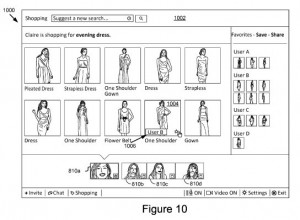 Internet-based technologies, including enhancements to the online search techniques with which Google has become synonymous, are included among recent patents issued to the company. Tools for obtaining input from personal contacts while engaged in an online search is disclosed and protected by U.S. Patent No. 8930454, issued under the title Providing a Shared Online User Experience. This patent protects a computer-implemented method for hosting an interactive virtual session controlled by a primary user, providing access to the interactive virtual session to at least one secondary user, providing a multi-party communication space that enables the various users to communicate, sending data based on a search query to secondary users and displaying search results as part of the interactive virtual session. This innovation streamlines the process of soliciting contacts for feedback on items of interest or products available online. An improved method of social networking through the sharing of content on websites is the focus of U.S. Patent No. 8925106, which is titled System and Method of Ownership of an Online Collection. This patent claims a method of determining which users are allowed to add content into a web-based collection and view content from that collection by receiving a list of users authorized to provide content onto a website. Users can contribute content if they are on that list or if they are associated with members of that list. This system enables a more inclusive method for obtaining useful content from a wider swath of participants while also authorizing the access of unknown participants.
Internet-based technologies, including enhancements to the online search techniques with which Google has become synonymous, are included among recent patents issued to the company. Tools for obtaining input from personal contacts while engaged in an online search is disclosed and protected by U.S. Patent No. 8930454, issued under the title Providing a Shared Online User Experience. This patent protects a computer-implemented method for hosting an interactive virtual session controlled by a primary user, providing access to the interactive virtual session to at least one secondary user, providing a multi-party communication space that enables the various users to communicate, sending data based on a search query to secondary users and displaying search results as part of the interactive virtual session. This innovation streamlines the process of soliciting contacts for feedback on items of interest or products available online. An improved method of social networking through the sharing of content on websites is the focus of U.S. Patent No. 8925106, which is titled System and Method of Ownership of an Online Collection. This patent claims a method of determining which users are allowed to add content into a web-based collection and view content from that collection by receiving a list of users authorized to provide content onto a website. Users can contribute content if they are on that list or if they are associated with members of that list. This system enables a more inclusive method for obtaining useful content from a wider swath of participants while also authorizing the access of unknown participants.
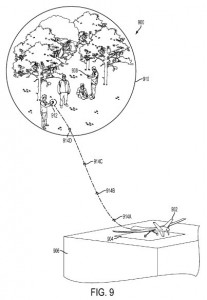 Drones are an area of technological development that is receiving a lot of focus these days and we were intrigued to see Google developing a system of using those devices to respond to medical emergencies. U.S. Patent No. 8930044, entitled Multi-Part Navigation Process by an Unmanned Aerial Vehicle for Navigating to a Medical Situation, claims an unmanned aerial vehicle (UAV) with a navigation module for providing flight-control signals for a UAV, which enables a localization process for pinpointing a medical situation, and a control system that determines an approximate target location associated with the situation and navigates a UAV to a medical situation. This enables a fleet of drones which may be outfitted with various medical equipment for cardiac arrest, choking or trauma situations to navigate towards a medical situation in response to an emergency call.
Drones are an area of technological development that is receiving a lot of focus these days and we were intrigued to see Google developing a system of using those devices to respond to medical emergencies. U.S. Patent No. 8930044, entitled Multi-Part Navigation Process by an Unmanned Aerial Vehicle for Navigating to a Medical Situation, claims an unmanned aerial vehicle (UAV) with a navigation module for providing flight-control signals for a UAV, which enables a localization process for pinpointing a medical situation, and a control system that determines an approximate target location associated with the situation and navigates a UAV to a medical situation. This enables a fleet of drones which may be outfitted with various medical equipment for cardiac arrest, choking or trauma situations to navigate towards a medical situation in response to an emergency call.
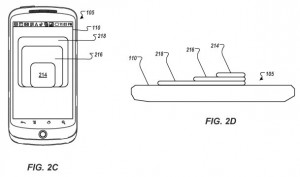 An innovative device display that can provide touch sensory feedback to users is the focus of U.S. Patent No. 8922507, which is titled Providing Information Through Tactile Feedback. The mobile electronic device claimed by this patent that includes an interactive display mounted within a housing and coupled to at least one processor having a display surface and a tactile interface configured to provide multiple perceived textures of the display that gives a sensation to a user that a certain section of the display has been raised. The tactile interface of this invention can convey additional dimensions of information to user, such as ranking search query results by touch.
An innovative device display that can provide touch sensory feedback to users is the focus of U.S. Patent No. 8922507, which is titled Providing Information Through Tactile Feedback. The mobile electronic device claimed by this patent that includes an interactive display mounted within a housing and coupled to at least one processor having a display surface and a tactile interface configured to provide multiple perceived textures of the display that gives a sensation to a user that a certain section of the display has been raised. The tactile interface of this invention can convey additional dimensions of information to user, such as ranking search query results by touch.
We also wanted to share a couple of very intriguing computer software innovations that Google has protected which provide a range of novel systems for consumer use. Mobile payment systems, which we’ll also see reflected in today’s patent applications, are featured within U.S. Patent No. 8930274, which is titled Securing Payment Transactions With Rotating Application Transaction Counters. The computer-implemented method for processing financial transactions claimed here involves receiving a bundle of public application transaction counters and a bundle of private transaction counters corresponding to the first bundle, receiving a request for payment information from a merchant computing system to process a payment transaction and processing payment information using the corresponding bundles of counters without accessing a secure element of the computing device associated with a user. The invention overcomes a shortcoming of near field communication (NFC) systems used for financial transactions which sometimes prevents access to services by banking institutions and payment providers. We also found an intriguing technology for automating the collection of highlights from a sports game or competition protected by U.S. Patent No. 8923607, issued under the title Learning Sports Highlights Using Event Detection. This innovation supports a system of detecting important events, such as goals or turnovers, occurring within a game by analyzing the frames of a video without requiring a user to watch the entire game video. The patent claims a computer-implemented method identifying a portion of a video as a sports highlight involves accessing a video, extracting a feature set associated with frames of the video, identifying portions of the video, detecting a set of events from each video portion by using a set of event models, calculating an event vector for a set of events in each video portion and classifying each portion with the use of a plurality of highlight classifiers.
[Companies-4]
Patent Applications of Note: From Self-Driving Cars to Home Thermostat Technologies
The state of innovation at Google is very strong currently. Some executive restructuring has helped, namely the appointment of Sundar Pichai as Google Product Chief, which frees CEO Larry Page up to focus on the company’s Google X labs and other research and development projects. Google maintains a strong R&D investment and sees a great value in innovation, as is evidenced by the company’s decision in November to quadruple the prize money awarded for the Turing Award, awarded annually by the Association for Computing Machinery and co-sponsored by Google and Intel, to $1 million. In December, the corporation also reported that it was soliciting research proposals from academic professionals for projects focusing on Internet-connected devices, especially in areas like user interfaces, security and privacy.
We actually found a couple of innovations in the area of digital security and fraud prevention that our readers may find interesting in light of our past coverage of cybersecurity issues here on IPWatchdog. Methods for improving computer security to prevent malicious attacks from hostile software applications are the focus of U.S. Patent Application No. 20140373154, filed under the title Defensive Techniques to Increase Computer Security. The computer-implemented method claimed here causes an operating system kernel to initialize a descriptor table associated with a hardware processor and change the permission level associated with the descriptor table based on an update request. This system prevents a hostile software application from writing data into a descriptor table or otherwise modifying data structures used by the central processing unit or the operating system kernel.
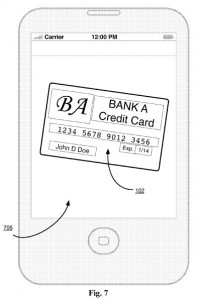 The prevention of fraud in credit card purchases processed through the use of mobile devices is discussed within U.S. Patent Application No. 20150006387, which is titled Preventing Fraud Using Continuous Card Scanning. This computer-implemented method receives a digital scan of a credit card from a camera, obtaining a plurality of card images from the scan, creating a 3D model of the card from those images and comparing the 3D model to a standard model for a card to verify that those models match. The continuous scanning techniques employed by this invention increase the accuracy of mobile payment systems for preventing fraud by employing 3D models which allow the system to detect and verify the presence of holograms and embossed text.
The prevention of fraud in credit card purchases processed through the use of mobile devices is discussed within U.S. Patent Application No. 20150006387, which is titled Preventing Fraud Using Continuous Card Scanning. This computer-implemented method receives a digital scan of a credit card from a camera, obtaining a plurality of card images from the scan, creating a 3D model of the card from those images and comparing the 3D model to a standard model for a card to verify that those models match. The continuous scanning techniques employed by this invention increase the accuracy of mobile payment systems for preventing fraud by employing 3D models which allow the system to detect and verify the presence of holograms and embossed text.
Google has been pursuing development of autonomous, self-driving vehicles over the past few years and recently boasted that its self-driving car has covered 700,000 miles of road distance, albeit in controlled conditions. We found a technology related to autonomous vehicles reflected in Google’s filing of U.S. Patent Application No. 20140358331, which is titled Transitioning a Mixed-Mode Vehicle to Autonomous Mode. The patent application would protect a method of wirelessly capturing data from a reference indicator and wirelessly requesting an autonomous vehicle towards a location associated with the reference indicator data. This system is designed to provide more precise position location for guiding a vehicle when that vehicle leaves a human operator mode and enters an autonomous mode.
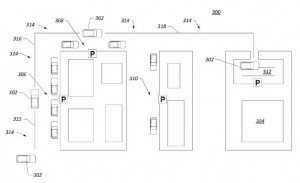 City drivers should be thrilled to find out about the Google system for intelligent parking spot location which is at the center of U.S. Patent Application No. 20150006075, entitled Systems, Methods, and Computer-Readable Media for Determining a Parking Route Near a User’s Destination. The computer-implemented method for identifying a parking space involves a processor that obtains a parking request including a destination and parking criteria. The system then identifies a potential parking space based on information stored in a parking data repository and provides information regarding the location of that parking spot to a client device. This innovation can present a user with multiple candidate parking spots in case an initial selection is unsuccessful.
City drivers should be thrilled to find out about the Google system for intelligent parking spot location which is at the center of U.S. Patent Application No. 20150006075, entitled Systems, Methods, and Computer-Readable Media for Determining a Parking Route Near a User’s Destination. The computer-implemented method for identifying a parking space involves a processor that obtains a parking request including a destination and parking criteria. The system then identifies a potential parking space based on information stored in a parking data repository and provides information regarding the location of that parking spot to a client device. This innovation can present a user with multiple candidate parking spots in case an initial selection is unsuccessful.
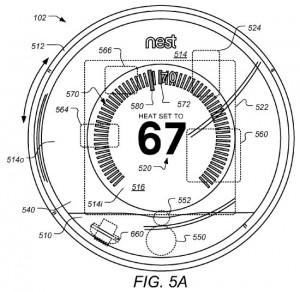 Home heating technologies and energy use were the targets of a few other inventions that grabbed our attention today. Google made a major foray into home heating systems with its February 2014 purchase of Nest for $3.2 billion and looks to improve its IP standing in thermostat technologies through the filing of U.S. Patent Application No. 20140365019, filed under the title Thermostat User Interface. The invention supports the remote control of thermostat equipment for adjusting an immediate control set point temperature without causing the wear and damage resulting from repetitive on/off commands. The method of remotely controlling a thermostat that would be protected involves displaying a graphical color-based indication of a heating mode or cooling mode in which the thermostat is currently engaged through a client device, detecting a user swipe on a graphical representation of a circular dial, outputting synthesized audible ticks corresponding to the user swipe on the dial and determining a user-selected setpoint temperature value to be wirelessly transmitted to the thermostat.
Home heating technologies and energy use were the targets of a few other inventions that grabbed our attention today. Google made a major foray into home heating systems with its February 2014 purchase of Nest for $3.2 billion and looks to improve its IP standing in thermostat technologies through the filing of U.S. Patent Application No. 20140365019, filed under the title Thermostat User Interface. The invention supports the remote control of thermostat equipment for adjusting an immediate control set point temperature without causing the wear and damage resulting from repetitive on/off commands. The method of remotely controlling a thermostat that would be protected involves displaying a graphical color-based indication of a heating mode or cooling mode in which the thermostat is currently engaged through a client device, detecting a user swipe on a graphical representation of a circular dial, outputting synthesized audible ticks corresponding to the user swipe on the dial and determining a user-selected setpoint temperature value to be wirelessly transmitted to the thermostat.
Techniques for building and accessing an energy management policy that promotes efficient energy management within home environments are featured by U.S. Patent Application No. 20140371937, titled Systems, Methods and Apparatus for Encouraging Energy Conscious Behavior Based on Aggregated Third Party Energy Consumption. This claims a method of encouraging energy-conscious behavior by determining energy usage information for each of a plurality of homes, comparing energy usage between a first and second home, determining similarities and differences between the amount of energy consumption in the first and second home and communicating energy consumption information from the second home on a user interface in the first home. The household energy manager of this invention is wall-mounted and replaces the function of a typical heating-cooling thermostat while measuring and managing the electricity consumption of dishwashers and other home energy appliances.
We’ve discussed a heavy focus on electronic contact lenses throughout our Companies We Follow coverage of Johnson & Johnson and we were surprised to see Google entering this field with its own energized lens technology. U.S. Patent Application No. 20140371558, which is titled Symmetrically Arranged Sensor Electrodes in an Ophthalmic Electrochemical Sensor, claims an eye-mountable device made of a polymeric material with a concave surface which is removably mounted over a corneal surface. A substrate is disposed within the polymeric material upon which is mounted an antenna, an electrochemical sensor, multiple electrodes and a controller. The electrical components of this contact lens aid in the analysis of human tear fluids, which can contain electrolytes, proteins and lipids, in such a way that could help monitor health conditions, such as glucose levels in diabetic patients.

![[IPWatchdog Logo]](https://ipwatchdog.com/wp-content/themes/IPWatchdog%20-%202023/assets/images/temp/logo-small@2x.png)

![[Advertisement]](https://ipwatchdog.com/wp-content/uploads/2024/04/Patent-Litigation-Masters-2024-sidebar-early-bird-ends-Apr-21-last-chance-700x500-1.jpg)

![[Advertisement]](https://ipwatchdog.com/wp-content/uploads/2021/12/WEBINAR-336-x-280-px.png)
![[Advertisement]](https://ipwatchdog.com/wp-content/uploads/2021/12/2021-Patent-Practice-on-Demand-recorded-Feb-2021-336-x-280.jpg)
![[Advertisement]](https://ipwatchdog.com/wp-content/uploads/2021/12/Ad-4-The-Invent-Patent-System™.png)







Join the Discussion
No comments yet.